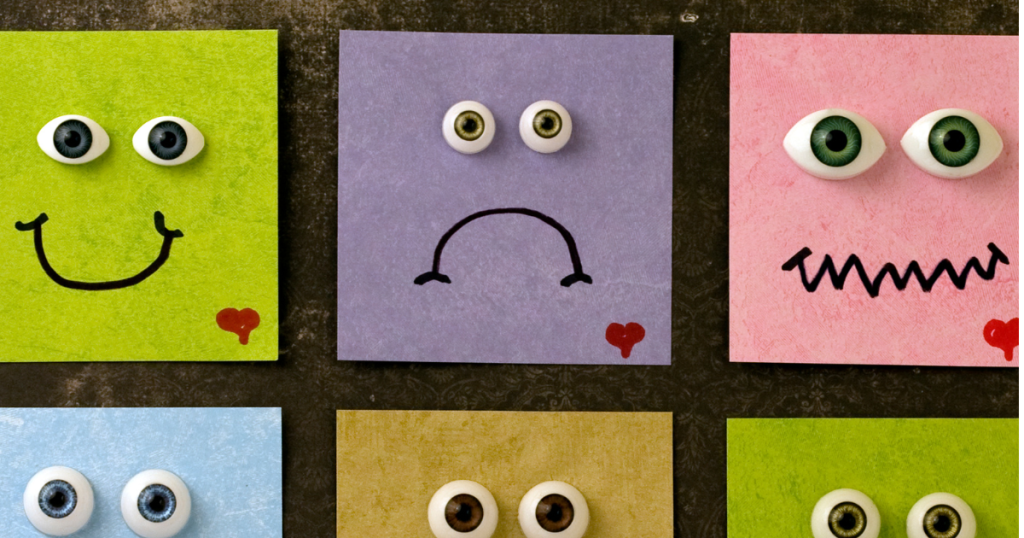Ever wonder what steps to take to heal anxiety and depression?
The kind of anxiety and depression I’m focusing on here is not the everyday type, but the kind that is diagnosable.
Let’s start with the fundamentals.
Anxiety and depression are feelings. Feelings exist in the body.
As humans, most of us believe we’re cognitive, rational beings who sometimes feel.
However, we’re more like emotional beings who on occasion think.

Feeling emotions can be uncomfortable. Even painful. For many of us, a natural reaction is to turn away from emotion.
There’s at least one problem with the turn-away method. Turning away makes things worse. It will not help heal anxiety and depression.
Even benign attempts at distraction are very limited in effectiveness. If they do help, the relief tends not to last long.
A much better option is to lean into the emotion.
In other words, feel it to heal it.
Keep in mind that emotions have a beginning, middle, and end.
Emotions are like tunnels. If you go all the way through them, you get to the end.
If you get stuck in a tunnel, you don’t reach the end. Maybe you can’t find your way out. Or you get lost.
And so it is with feelings. When you get stuck in them, they stagnate.
A “stuck” feeling doesn’ get to the end of the tunnel. It leaves you smack in the middle of the anxiety and depression. Yuck!

Anxiety and depression: They’re just feelings.
Not finding your way completely through. Getting lost. That’s one way to think about anxiety and depression.
They are normal human emotions.
Feelings are just that – feelings. They rise from chemical changes in your body, and they’re neither good nor bad. They simply are.
Certain feelings are definitely more pleasant than others. Some feelings are more comfortable to have then others. That’s different than feelings being good or bad.
Feeling anxious is a natural reaction to stress. And stress may be more about what you’re telling yourself than about what actually is.
Your perception of something easily becomes your reality. The ‘what if’s’ and other forms of catastrophizing are good examples of cognitive distortions that lead to beliefs and then anxiety and depression.

If depression and anxiety become chronic, interfere with your life and relationships, and/or cause other problems for you, consider professional help. There is nothing wrong with that! Reaching out for help is courageous and wise.
Let’s say you decide to heal everyday forms of anxiety and depression on your own. Or perhaps you want to work on healing your anxiety and depression at the same time you’re in formal treatment.
Here are 6 steps for healing anxiety and depression:
1. Validate your own feelings.
Whatever you’re feeling is valid. Even if what you’re feeling is different from what others feel (or simply what you perceive they feel). You may prefer to feel some other emotion than what you are feeling. Acknowledge what it is you do feel. You have a right to feel whatever it is you feel.
2. Name it to tame it.
Identify with specificity the emotion(s) you’re feeling. Instead of “I feel bad”, try words that are more descriptive of the actual emotion. Does feeling “bad” mean you feel like you could crawl out of your skin? Or more like a sense of hopelessness? Defeat? Some combination?
The fancy name for this technique is emotional granularity.
Examples of emotional granularity may help clarify this important point. Different aspects and levels exist for both anxiety and depression.
For example, anxiety could be described as angst, apprehension, fear, stress, uneasiness, suffering, nervousness, freaking out, panic, restlessness, uncertainty, or dread.
In fact, a Google search found close to 100 synonyms for anxiety!
Even more synonyms exist for depression (at least according to Google). Examples include melancholy, sadness, gloom, sorrow, unhappiness, defeat, down in the dumps, woe, tiredness, and weariness.
A great strategy for emotional granularity is to use an emotion wheel.

3. Create new neural pathways, and let other pathways fill in to heal anxiety and depression.
Specifically, the neural pathways that are traveled most often are the ones you’re strengthening. What the heck does this even mean?
Your old stories (“I’m not good enough,” “I suck”) are literally keeping you stuck.
Each time you think a particular thought, you deepen that thought’s circuit. So you are always practicing and deepening something.
Rick Hanson puts it succinctly when he says, “Where your attention goes, neural firing flows and neural connection grows.”
So, whatever you pay attention to, wherever you put effort — that’s what you get more of.
With your thoughts — just by thinking — you are always strengthening something.
So, think negatively, and you’ll get more automatic negative thinking including more anxiety or depression or both.
In contrast, move from a place of strength, gratitude, or competence, and you will see more of your strengths and notice more reasons to be grateful..
Even thinking neutrally can be helpful.
4. Feel the feelings that exist in your body.
Use your body as an instrument to assist with processing the feeling “through the tunnel.” Find what works for you, which may vary depending on the feeling and context.
Mindfulness, defined as nonjudgmental awareness in the present moment, with acceptance of what you feel, may be helpful. “Welcome the feelings in for tea,” some Zen masters suggest.
Notice sensations associated with different emotions, as well as where the sensations are located. Doing so is a practice. The ease of identifying feelings and their location will vary over time and situations.
5. Move it.
Because feelings are located in the body, moving your body can be very helpful in processing feelings. This doesn’t have to be intense or considered “exercise”. Rather, just move around. Doing so activates serotonin neurons.
Why not take a walk in your neighborhood? Or groove to the beat of your favorite tunes?
6. Provide self–compassion. Give yourself some grace!
You CAN heal from anxiety and depression. Be kind to yourself. Not in a woe-is-me, pity party kind of way., but in a way that reminds you of the shared humanity, the universality, of what you’re experiencing.
Practice using tools that help you personally heal anxiety and depression. If the tools work for others but not so much for you, that’s ok. Keep practicing until you find what feels helpful.
Connect with other people in whose presence you feel supported. Consider yoga,meditation, journaling –something that is you-focused and can easily be a daily practice
Remind yourself that you will not ALWAYS feel anxious or depressed. This moment isn’t all moments. It’s just right now.

You won’t always feel this way,even if it feels in the moment as if you will.
Over time you’ll learn what helps to heal your anxiety and depression.
When you start to feel early signs of anxiety and depression, you may recognize that as an opportune moment to access your tools.
Include your body in the healing of anxiety and depression. Mind-body-spirit are star players on “Team Heal”.
Dr. Elayne Daniels is a private-practice psychologist, international consultant, and coach. Over the last 25 years, she has helped people heal and deal with depression and anxiety. To learn more about how she might help you, contact her here.
